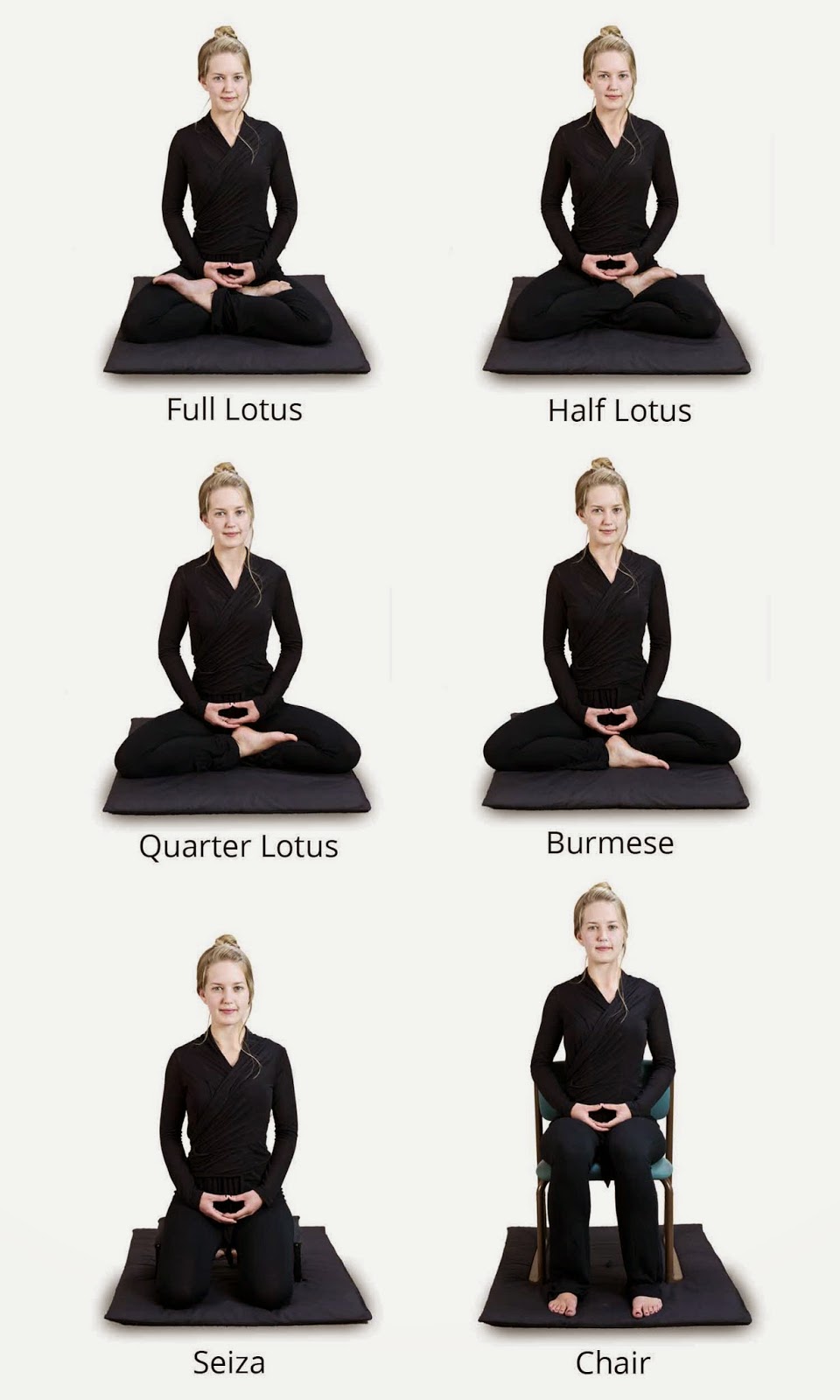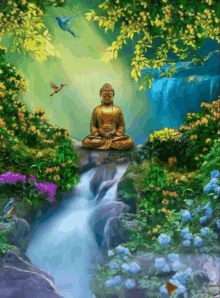Awakening for all: Zazen key: cultivation/verification
The zazen mudra, hand symbol, is Dharma-dhātu-samādhi, Dharma-world-integration, symbolizing that one is in Dharma-world-integration, in cultivation / verification of the triple learnings of morality, integration, and prognosis. The problems / sufferings in the world are due to childish / selfish / sinful adults.
Zazen is the constant cultivation of the Dharma-world, transcending childish / selfish / sinful karma, and verification of the adult / selfless / holy values of morality / integration / prognosis, truth / goodness / beauty / holiness, great / mature / joyful / soft-tender hearts, limitless life / light / liberation / love, holy / harmonious / healthy / happy life, etc.
Zazen is the continuous practice of cultivation / verification / growth / gratitude in these values, from the long night of nescience / desire / divisiveness / delusion to awakening / morality / integration / prognosis, developing skillful means in individual / social / environmental spheres and realizing equality / peace / freedom / autonomy, etc.
Anyone can sit still, stilling karma, settle in nirvana, see the Dharma, serve and save all by practicing morality / integration / prognosis, transcending / transforming desire / divisiveness / delusion imbued in long-accumulated karma, aspiring to save all as a bodhisattva (awakening being) / mahāsattva (great being) and buddha (awakened).
November 22, 2024 C.E.
Notes:
1.The word adult means “grown” (from adultus, past participle of Latin adultescēre). Even if one looks grown-up physically, if one is not grown-up mentally, one remains childish / selfish / sinful. The Japanese letters 大人 means big / great person. One can become big, but may not be great. Confucius used 君子 for virtuous / great person, perhaps avoiding this confusion. The Buddha strived in cultivation / verification for 45 years after his awakening with his kalyana-mitra, good friends, bequeathing the great system of the triple learnings of morality, integration, and prognosis for all to become bodhisattvas and buddhas
2.Dharma means 1. form (from d-harm: phenomenon) and 2. norm (from d-h-arm: norm: law operating through phenomena: ethic), and 3. the teaching of the law of all phenomena, that is, Dependent Co-origination (originally awakened on the origination of perception / consciousness depending on the sense organs and objects, but later applied to all phenomena, cf. note 5). This law is similar to the law of causality, now used by sciences, but deeper and wider, applied beyond objects – more on subjects and symbols – ideas, etc.).
3.“The Dharma (Norm / Law / Truth / Ethic) of all dharmas (forms / phenomena / truths / ethics)” is Dependent Co-origination, i.e., all phenomena are interdependently co-originated on limitless causes and conditions (similar to the Law of Causality, but deeper and wider – beyond conventions, conceptions, objects, etc.). This means that we are interrelated with other beings (other species, elements, stars, etc.), and relatives to each other, and that we must therefore live together harmoniously and strive to make a wholly wholesome world to become harmonious, health, and happy.
4.Dharma-dhatu means the Dharma-world / root, which is our root / world, part and parcel of all, like ocean, where we are like foam, coming out of and returning to it, actually / always limitlessly inter-related / -functioning throughout / beyond time / space, whose crystal balls on its knots reflect each other mutually and limitlessly in space and time, illustrating the Dharma of Dependent Co-origination well, showing that all phenomena are interdependently co-originated and co-originating among themselves. One (person or thing) is interconnected with others (persons or things) by elements (air, water, light, magnetism, chemicals, particles, sounds, colors, etc.), molecules,
5.Karma is instilled with the triple poisons of desire, divisiveness, and delusion (of ego / mei: I / my). The Buddha said that all living beings are karma-birthed, -heirs, -owners, -machines, and -refuged. He clarified that there is no self-substance with self-sameness (permanent) and self-sovereignty (wishful) entities due to the Dharma (Truth / Law) of all dharmas (phenomena), Dependent Co-origination. We as karma-machines must change to the Dharma-refuged in order to change the world in suffering to that in holiness (wholly wholesome: harmonious, healthy, and happy).
6.The practice of Zen (jhāna / dhyāna: meditation), the key and core practice of za-zen, sitting meditation, is to still karma, settle in nirvana(nir-vāṇa = ni-vāta: no-wind, of karma, see the Dharma, and serve and save all. This process is categorized in the Four Zen Stages and the Eight Concentration (samādhi) Stages (actually Four Zen Stages plus Four Concentration Stages combined, going together). As shown in the Four Zen Stages thoughts, emotions (the representative five coverings: lust-desire, covetousness-malevolence, sloth-drowsiness, agitation-worries, doubts), and volitions (the representative four fluxes: lust, becoming/identification, views/dogmas, nescience/no witness, of nirvana) are stilled in this order.
Please refer to 5. What is Karma? in “Why Buddhism Now?”
https://buddhism869196463.wordpress.com/%e3%83%9b%e3%83%bc%e3%83%a0%ef%bc%9ahome/
7.Nirvana means no wind (of karma imbued with the triple poisons of desire, divisiveness, and delusion), where one can for the first time witness the Dharma world and become awakened from the long night of nescience to the Dharma of all dharmas in calm, clear, controlled, and careful conditions, then prognosticate problems and sufferings in the Four Holy Truths and the Eight Holy Ways.
No-wind of karma stills the two roots (craving and nescience) and stills their results of suffering and samsara [six ways/realms of hell beings, hungry ghosts, (fighting devils), animal beings, human beings, celestial beings], thus become freed (liberation, freedom) from samsara and suffering. One opens the right Dharma-eye there (Right Dharma-eye stored in the exquisite heart of nirvana), attaining countless merits of no moving (blowing) of karma (no moving, no death: ambrosia: amṛta), freed from discrimination, bondage of self, other, that, this, etc. (nothingness, emptiness, no-self, limitless: limitless life, limitless light, no attachment, no obstruction, etc.), realizing the true world (Dharma world, Buddha world, paradise, pure land), freed from straying, delusion, etc.
Please refer to 4. What is Nirvana? in “Why Buddhism Now?” https://buddhism869196463.wordpress.com/%e3%83%9b%e3%83%bc%e3%83%a0%ef%bc%9ahome/
一切の為の覚醒:坐禅鍵:修証
坐禅の定印、手による象徴、は法界定印であり、当人が法界にあり、戒定慧の三学にあることを象徴していいる。世界に於ける問題/苦は幼児的/自己中心的/罪の大人に依る。
坐禅は法界の常時の修行であり、幼児的/自己中心的/罪の業を超越し、大人の/無我の/聖なる戒/定/慧の、真/善/美/聖の、大/老/喜/柔軟心の、無量寿/光/解/愛の、聖性/調和/健康/幸福の価値の確証をすることである。
坐禅はこれらの価値において修証成長感謝の持続的実践して、無明貪瞋痴の長夜から覚醒戒定慧へ、個人社会環境分野における善功方便を展開し、平等平和自由自治等を実現することである。
誰でも静坐し、業を静め、戒/定/慧を実践して長く積み重なった業に染み込んだ貪/瞋/痴を超越/転換することによって、涅槃に安住し、法を見、菩薩(覚醒途上者)/偉大者/覚者(ブッダ)として一切に奉仕し救済することが出来る。
2024共通年11月23日
註:
1.Adult(大人)は「成長した」(adultus, ラテン語adultescēreの過去分詞)を意味する。人は例え身体的に成長したように見えても、もし精神的に成長していなければその人は幼児的/自己中心的/罪的なままである。日本語の大人は大きな/偉大な人を意味する。人は大きくなっても偉大でないかもしれない。多分この紛らわしさを避ける為孔子は、有徳で偉大な人を「君子」という言葉を用いた。ブッダは覚醒後45年間善友と共に修証に精進して、一切が仏(ブッダ)・菩薩となるように戒/定/慧の膨大/偉大な組織を遺贈した。
2. 法(dharma)は 形態(form: d-harmより: 現象:真理)、2.規則(norm: d-h-armより:現象中の規則:倫理)、3.諸法の法、縁起(元来は感覚器官と感覚対象に依る知覚・意識の発生に覚醒したが後に一切現象に適用されたもの。註5参照)。この法則は、現今諸科学に用いられる、因果律と同様であるが、もっと深く広い-客体を越えて主体と観念などの象徴に適用される。
3.諸法(形態・現象)の法(規則・法則・真理・倫理)は縁起(因縁生起)、即ち、一切現象は無量の直接原因と間接条件により相依生起するということである(因果則に似ているがさらに深く広い-世俗、観念、対象などを超える)。これは私達が他者(多種、要素、星宿など)と相依関係にあることを意味し、相互に相対的であり、私達が調和、健康、幸福になる為には共に調和して生き、全体健全な世界を作る努力をしなければならないことを意味する。
4.法界は法の世界根源を意味するが、それは私達の根源世界であり、一切の一体生であり、そこでは私達が泡沫である大海のようであり、そこから来たりそこへ去り、実は常に時空に亙り・超えて無限に相互に関連し機能し、又帝釈網のようであるが、そのその結び目にある水晶の珠が時空中に相互に無限に反映し合うが、一切現象が共に生起し生起させる縁起の法を例示している。一(人又は物)は(気・水・光・磁力・化学物質、素粒子・音・色等)の要素、分子、微生物、(言葉、芸術、メディア、インターネット等)の通信、(ウィルス、植物、動物、人間、星等)の行動などに依り内外、時空に無限に他(諸人又は諸物)と結びついている。
5.業は貪瞋(エゴ/メイ:我/我所の)痴の三毒が植え込まれている。ブッダ(覚者)は一切衆生は業—誕生者、—相続者、—所有者、—機械、—依拠者であると言った。彼は、諸法(現象)の法(真理/倫理)である縁起の故に自己同一(永住)と自己主宰(意欲通り)の実態をもった自己物質は存在しないことを明らかにした。業—機械である私達は、苦しむ世界を聖(全体健全:調和、健康、幸福)なる世界に変える為には、法₋依拠者にならなければならない。
6.鍵となる静坐の実践は業を静め、涅槃(nir-vāṇa = ni-vāta: no-wind, 無風、業風の)に安住し、法を見、一切に奉仕し救済する。坐禅(静坐瞑想)は身体・呼吸・頭脳(身口意)業を整え静止する。四禅は、尋求、伺候、喜悦、安楽を静め平静 (upekhā/upekṣā, 字義は捨離)・涅槃に到達する結果の心的(知性・感情・意欲)業を静止する過程を表示している。
「今何故仏教か?」の4(涅槃)と5(禅)を参照:
https://buddhism869196463.wordpress.com/%e3%83%9b%e3%83%bc%e3%83%a0%ef%bc%9ahome/
7.涅槃は(貪瞋痴で染汚した業の)無風を意味するが、そこで人は静謐・明澄・統制・注意状態で法界を直証し諸法の法に初めて無明長夜から目覚めて、問題と苦に対する四聖諦、八聖道で般若(の知恵:処方)を得る。
業の無風は二根(渇愛と無明)を静止してその結果の苦(四苦八苦など)と輪廻 [地獄、餓鬼、(修羅)、畜生、人間、天上の五(六)道(界)] を静止する、即ち輪廻・苦から自由になる(解脱・解放)。そこでは業による動揺が無く(不動、不死:甘露: amṛta)、我他彼此などの分別・束縛から自由になり(無・空・無我・無量:無量寿・無量光・無著・無碍など)、真理世界(法界、仏界、極楽、浄土)を現観し、迷・惑から自由になり、大局観・甚深・微妙な世界(法身、真実人体)を覚るなど涅槃による正法に眼を開き、無数の功徳を得る(正法眼蔵涅槃妙心)。
「今何故仏教か?」の4.涅槃とは何か?参照
https://buddhism869196463.wordpress.com/%e3%83%9b%e3%83%bc%e3%83%a0%ef%bc%9ahome/.
.
.
.
.
.
.
.
.
.
.
.
.
.
.
.
.



